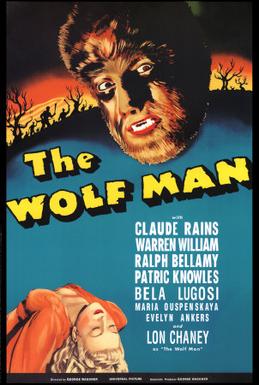
The fact that Lon Chaney, Jr., the actor who plays the Wolf man in the 1941 version, puts on the wolf man makeup and outfit even 30 years after the movie was made brings light onto how revolutionary this movie was. The Wolf man (1941) was the second time a werewolf was put onto the big screen, and, though the effects seem cheap and unrealistic, they were spectacular for the time.
The transformation in the classic film was much more strategic. The frame focuses on Chaney’s feet as he grows hair then walks away. This method was a money and time saving technique. Yet, the transformation was affective and makes the viewer see the wolf man as more human. Also, the story line is held stronger. So the approach is to show the audience that he is changing, then show him completely changed, sort of a way to shock the audience. All of this transformation happening with a film orchestra playing a thrilling score.
When Benicio transforms, his bones realign. His feet bulge out, and he grows sharp fang teeth. Most importantly, the audience sees all of the changes. The effective result is the transformation feels realistic. What the film looses is the stylistic method in capturing a believable transformation without ever really showing any truly realistic effects.
Whether the older or the newer Wolf man is better becomes irrelevant. The times were completely different. The newest version lost its style in the transformation, while the older one was obviously not real. While the newer one gets multiple shots at different angles, the older one tries to keep one continuous show of his transformation illustrating the patience of the time. As the CGI improves, the more our spectators expect real looking, fast-paced special effects.





.jpg)
